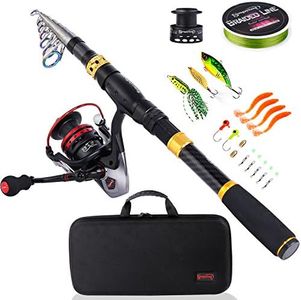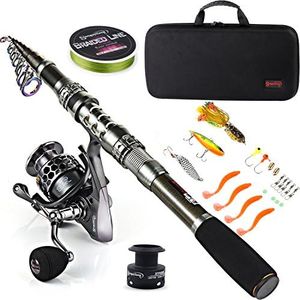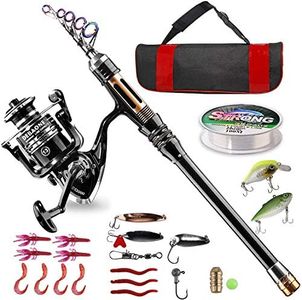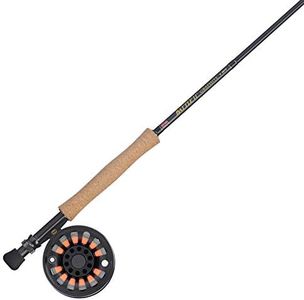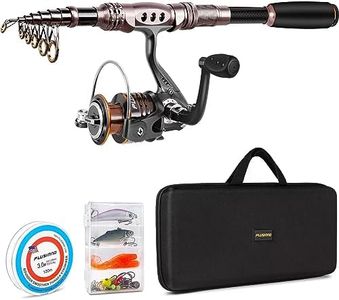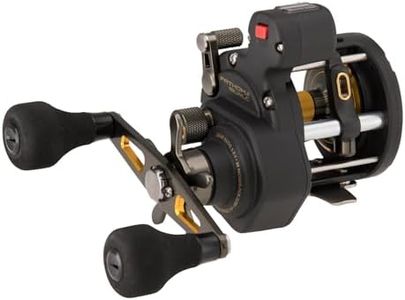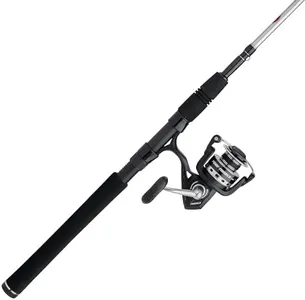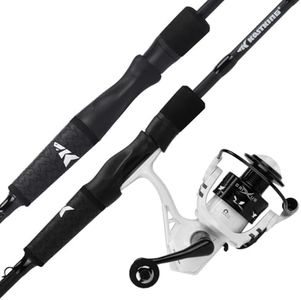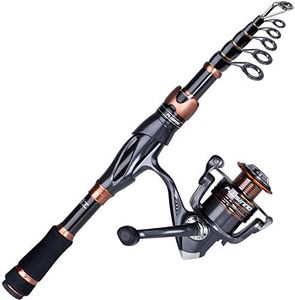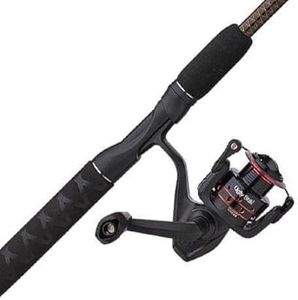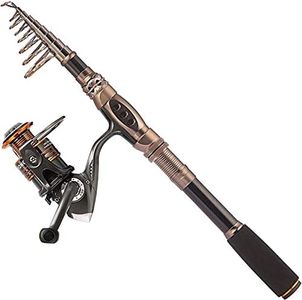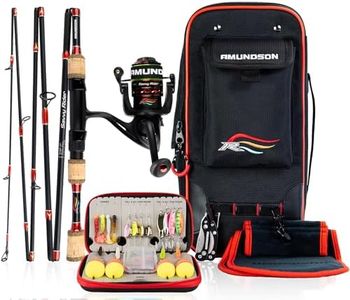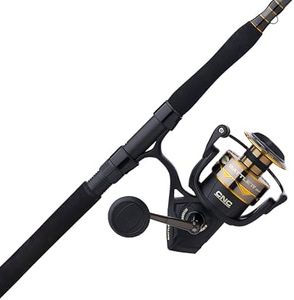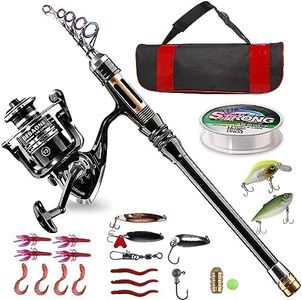We Use CookiesWe use cookies to enhance the security, performance,
functionality and for analytical and promotional activities. By continuing to browse this site you
are agreeing to our privacy policy
10 Best Travel Fishing Combo
From leading brands and best sellers available on the web.Buying Guide for the Best Travel Fishing Combo
Choosing a travel fishing combo is about finding a practical balance between portability, performance, and suitability for your fishing style. Travel combos are designed for anglers who want to pack their gear easily, so they’re compact and lightweight without sacrificing too much power or durability. To pick the right combo for you, it's important to think about where you’ll be fishing (freshwater or saltwater), the type of fish you target, how often you’ll travel with the gear, and how much space you have available. Examining a few key aspects can help you decide which set will give you an enjoyable fishing experience on the go.Rod LengthRod length refers to how long the fishing rod is from end to end, and it’s crucial because it affects casting distance, control, and how much space the rod takes up when traveling. Shorter rods (under 6 feet) are very portable and easy to pack but are generally better for close-range fishing and tight spaces like docks or small creeks. Medium rods (6 to 7 feet) offer a good mix of portability and casting range, suiting most travel anglers. Longer rods (over 7 feet) give more casting distance and power, but they are less compact even when broken down. If you’re backpacking or have very limited luggage space, a shorter or medium travel rod is advisable, but if you anticipate fishing in open areas or targeting bigger fish, prioritize length, as long as transport remains manageable.
Rod PiecesThis spec tells you into how many sections the rod can be disassembled. Travel rods typically come in 3, 4, or even more pieces. The more pieces a rod has, the shorter each segment will be, making the combo easier to fit in bags or backpacks. However, rods with fewer pieces tend to feel slightly smoother and stronger when casting and fighting fish. For frequent travelers or those carrying gear in compact spaces, a rod with more pieces (4 or more) is ideal. If you don’t mind a slightly longer packed length and want top casting feel, choose a 2- or 3-piece rod.
Rod Power and ActionRod power indicates how much force is needed to bend the rod, ranging from ultra-light to heavy. Action describes where and how quickly the rod bends when pressure is applied. Light power and fast action rods are suitable for small fish and precise, short casts, making them great for streams and ponds. Medium power and moderate action rods cover all-around use from bass to trout. Heavy power rods are intended for larger fish or saltwater species. Think about the kind of fish you want to catch and the common baits or lures you'll use—go for lighter models for panfish and trout, medium for bass and similar fish, and heavier if targeting large saltwater or predatory fish.
Reel Type and SizeTravel combos usually come with either spinning or baitcasting reels. Spinning reels are generally more user-friendly and versatile for beginners or most travel anglers, whereas baitcasting reels are favored by experienced anglers for certain techniques. Size matters too: smaller reels (1000–2500) pair well with light rods and lighter line, suitable for small fish and freshwater fishing, while larger sizes (3000–4000+) are needed for bigger fish or saltwater. Match the reel type and size to your rod and the species you plan to catch for a smoother fishing experience.
Material and Build QualityThe material of both the rod and reel affects weight, strength, and durability. Common rod materials are graphite (which is lighter, more sensitive, but slightly less durable), fiberglass (which is tougher and more flexible), and composite (a combination). For travel, graphite or composite rods are usually preferred for their balance of sensitivity and strength without the weight. For reels, aluminum and other corrosion-resistant metals are important if you’ll be fishing in saltwater. Choose durable materials that can withstand the rigors of travel and occasional bumps, especially if you’re backpacking or flying.
Carrying Case or Portability FeaturesPortability isn’t just about the rod size—it’s also about how everything packs together. Many travel combos come with a soft or hard carrying case to protect the rod and reel during transit. Some even have space for small tackle boxes or accessories. A sturdy, well-padded case keeps your gear secure when moving between locations, so always check if a case is included or if you need to buy one separately. Look for features like easy-zip openings, compartments, and a compact overall size that fits your travel style.
